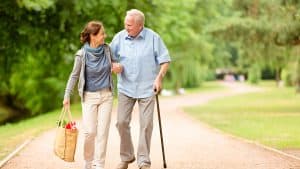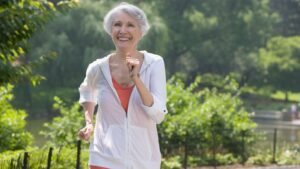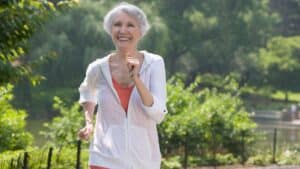Caregiving and Care Receiving Equal Resilience in Action

As you know, fear and stress on the body can accumulate over time. It imprints in ways that you may not be prepared for, through the subtle and cumulative impressions of our experiences on our body and mind. It does not feel good at all.
A couple of years ago, my husband Mark was hospitalized, not once but twice, and both times through the ER. He looked ok the day before, a bit dizzy and tired. And then the next day he could not get out of bed!
We waited over eight hours in the ER before he was admitted. I contacted a friend who works for the healthcare system to find out if there was a secret code or secret handshake that we could use to cut down the wait. Sadly, it doesn’t exist.
Accepting My Role as a Caregiver
After the initial shock dissipated, I realized it was going to take awhile before he got well. I did nothing else except rally around my husband for the first two weeks.
People were saying I needed to be strong for my husband. Those words are truly not helpful, though taking care of myself would have helped Mark too.
I received many kind offers of help through texts, emails, and telephone calls. From “Can I do anything for you and Mark?” to “Do you want me to sit with you at the hospital?” to “Can I go to the market and pick up dinner?” to “Don’t forget to take care of yourself – go for a walk or meditate or hug a tree.”
I was overwhelmed with worry and flooded with emotions. This was the first time since we started dating that he was ill beyond a cold or a mild flu. I was exhausted taking care of him and running my business.
The Mental Exhaustion of Caregiving
Just a few weeks prior, I completed my second triathlon. That preparation did not train me for the mental and physical exhaustion that followed. I went from working out six days a week to zero. I know this was not a good choice.
The truth is, I am a caregiver by nature. I was born this way. As a first born, it comes naturally to me. From a very young age, I learned the value of taking care of others. I am very, very good at it. In a crisis of any sort, I am your go to gal. I can handle it.
I have been my family’s designated relative to help in times of grief, illness, and caregiving aging relatives. I have proven this time and time again both personally and professionally. I rise up to meet any challenge, even though at times it is more than I can handle alone.
So, when people offered to help, my knee jerk response was always, “That is so sweet, it’s ok, I am ok, we don’t need anything,’ etc. The truth of the matter was, I was not ok.
It would have been so nice to have company in the ER and then in the hospital. It would have been wonderful if someone brought over dinner, or wine or ice cream or chocolate or simply spent time.
So here are the six truths about caregiving that everyone should know.
Caregiving and Care Receiving Are of the Same Value
Care giving and care receiving are both of equal value and need to be honored and nurtured. I guess I didn’t value the giving of others as much as the giving of myself. This is big for me. Your generosity of soul and spirit is equal to my generosity of soul and spirit, and I should remember that.
Resilience Does Not Negate the Setbacks
Being resilient doesn’t mean that you will bounce back quickly or without setbacks. It means having the tenacity to not give up no matter the circumstances. It also means to leverage your strengths to maintain your physical and emotional well-being during the time of crisis and uncertainty.
Asking for Help Gives You a Break
Being resilient means having the courage to ask for help when you need support. By sharing your vulnerability with others, it gives them the opportunity to help when you need it the most.
I Don’t Have to Do It All
Asking for help is out of my comfort zone. I need to honor my need to receive when in times of crisis and challenge. I have been exhausted and felt the heaviness of taking care of another human.
Help Those in Need
If you are of the generous and giving type who offers to help those in need, just to it. I didn’t have the time to respond to each offer. Don’t wait for a response, just show up with food, or wine or ice cream or chocolate or a hug or your time. You have no idea how much it will mean.
Healing Takes Time
It requires much patience and grace to allow yourself time to heal from the experience. I am not the patient type, and it has been hard to work through the residual feelings of fear and exhaustion.
Now that the worst is behind us, I must continue to be cognizant of the equal value of both caregiving and care receiving.
Do you agree that women are caregivers by nature? If you are a caregiver, what have you learned on your journey? Which caregiving experiences exhaust you the most? Please share your hurdles and how others’ help has been a pillar for you.
Read More







 Source: Instagram
Source: Instagram

